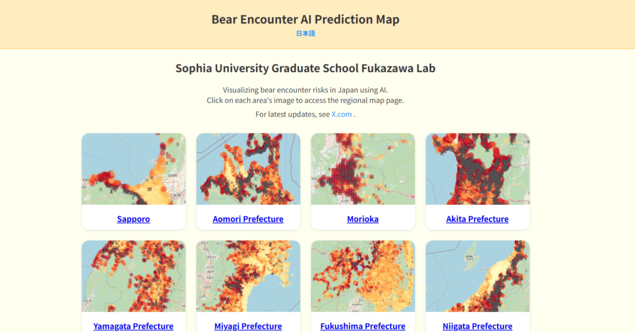TOKYO – A research team at Sophia University in Tokyo has released an online “Bear Encounter AI Prediction Map” that estimates the likelihood of human-bear contact in 19 regions, aiming to reduce the frequency of attacks.
The map uses artificial intelligence to forecast bear-related risks in areas such as Sapporo in Japan’s northernmost Hokkaido and Akita Prefecture in Honshu, the country’s main island, drawing on regional environmental data and reported sightings.
The team hopes the tool will help residents, tourists and local governments better prepare for bear activity in their areas, as attacks have become a growing concern even in cities and towns.

“Bear Encounter AI Prediction Map” by Sophia University Graduate School Fukazawa Lab
Associate Professor Yusuke Fukazawa, a data science expert, and his team developed an AI-based tool that predicts bear-human contact risks by analyzing one to three years of sighting data, forest conditions, road layouts and population density.
The analysis showed higher risks along the foothills of mountainous areas, river corridors where bears can move unseen, and roads in remote valleys, while communities with aging populations also tended to face an elevated chance of bear encounters.
Based on the system, the team released on Oct. 20 a prediction map that color-coded one-square-kilometer areas into five levels, from low to very high, representing 0-20 percent to 80-100 percent estimated probability of bears being in the areas.
In areas where bears have actually been seen, the model found accuracy levels varied depending on regional conditions across the surveyed locations.
Fukazawa expressed eagerness to improve the model’s accuracy by seeking input from bear specialists and incorporating additional information, including weather data as well as bear distribution and movement patterns, to refine future iterations.
Japan is home to brown bears in Hokkaido and black bears in Honshu and Shikoku, one of Japan’s four main islands.


AloJapan.com